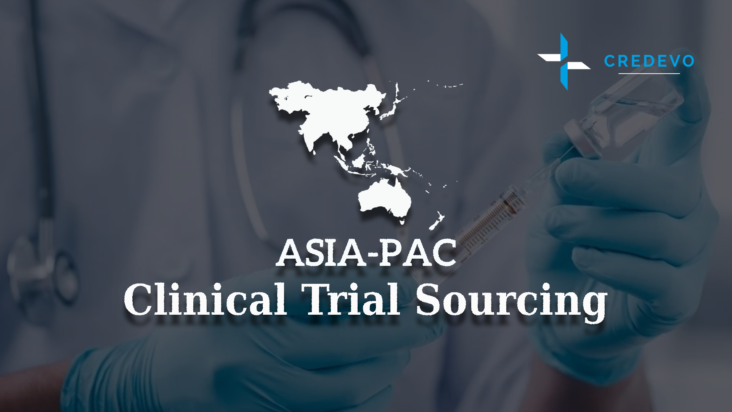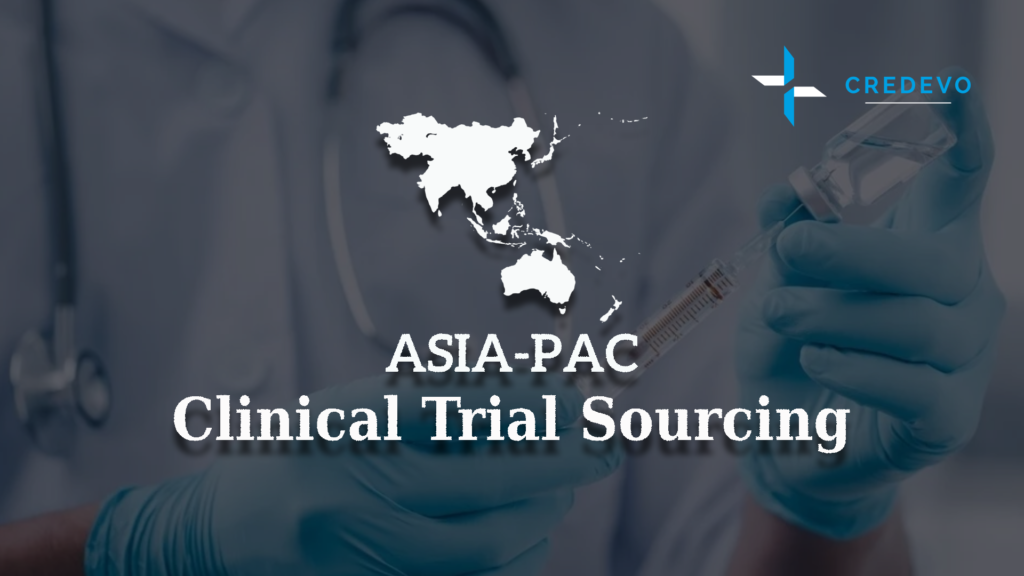Clinical Trial Sourcing In The Asia-Pacific Region: A Comprehensive Guide To Clinical Trials In Asia-Pacific Countries

Pharmaceutical research and development in the Asia-Pacific (APAC) region now heavily relies on clinical trial sourcing. Collaborating with research institutions and healthcare organizations fosters international research partnerships and facilitates knowledge exchange. Most countries in the Asia-Pacific region tend to seek this help because it brings several benefits.

The success of clinical trials depends on the ability to secure the correct comparator medications, reference-listed drugs, and biosimilars at the appropriate time and location. The availability of these medications is crucial to their integrity.
Clinical trial sourcing involves procuring the necessary medicine and supplies for clinical trials. Pharmaceutical companies play a central role in ensuring that required medications are available and delivered on time.
Effective clinical trial sourcing begins with strategic planning. Pharmaceutical companies identify the medications needed for their trials, assess availability, and develop a sourcing strategy. The strategy involves evaluating potential suppliers, negotiating contracts, and meeting the required quality and regulatory standards.
This article will delve into the intricacies of clinical trial sourcing in the APAC region, exploring the roles and responsibilities of pharmaceutical companies in this process and highlighting the various aspects of sourcing, logistics, and risk management.
Clinical trial sourcing in the Asia Pac region
The sourcing of clinical trials presents significant benefits that augment the efficacy and economy of clinical trials. These benefits collectively contribute to the overall success of clinical trials and the subsequent marketing of new drugs, ultimately advancing medical research and improving patient outcomes.
Following are some examples out of many.
- Ensuring high-quality trial materials: Sourcing from reputable suppliers ensures that the drugs and other materials used in clinical trials are of good quality and meet all regulatory standards.
- Cost efficiency: Efficient sourcing strategies can lower the overall costs of clinical trials by reducing expenses related to procurement, logistics, and supply chain management.
- Timely availability: Reliable sourcing ensures that all necessary materials are available when needed, preventing delays in trial initiation and progression.
- Enhancing data integrity: Using high-quality and consistent trial materials helps generate robust and reliable data. This integrity is essential for proving the efficacy and safety of new treatments.
- Facilitating regulatory approval: Compliance with regulatory requirements from the outset simplifies the approval process, reducing delays and administrative burdens.
- Risk management: Proactive sourcing strategies include risk assessment and management plans to address potential supply chain disruptions, quality issues, and regulatory hurdles.
- Enhancing credibility and trust: Reliable sourcing practices build trust with stakeholders, including regulatory bodies, investors, healthcare providers, and patients.
- Accelerating time to market: Streamlined sourcing processes reduce delays, ensuring that trials proceed according to schedule.
Challenges in clinical trial sourcing in the Asia-Pacific region
While the Asia-Pacific region offers significant opportunities for clinical trial sourcing, it also presents several challenges. Pharmaceutical companies can leverage the region’s potential to conduct high-quality, cost-effective clinical trials by understanding and proactively managing these challenges.
Following are some of the challenges:
- Regulatory complexity: The APAC region comprises multiple countries, each with its own regulatory requirements and approval processes for clinical trials.
- Infrastructure variability: Healthcare infrastructure varies widely across the APAC region, with some areas having advanced facilities and others facing significant limitations.
- Quality assurance and control: Ensuring consistent quality across diverse sites and regions can be difficult when working with multiple suppliers and CROs.
- Intellectual property and data security: Protecting intellectual property (IP) in the APAC region can be challenging due to varying levels of IP enforcement.
- Logistical and supply chain challenges: The APAC region’s vast geography and diverse climate can pose significant logistical challenges.
- Cultural and ethical considerations: Understanding and respecting cultural sensitivities is crucial for successful patient recruitment and retention.
How to plan clinical trial sourcing
Planning clinical trial sourcing involves strategic coordination and collaboration to ensure the smooth procurement of drugs and materials essential for the study.
The following points give you a clearer understanding of the process.
- Early engagement with supply partners: Early engagement with supply partners during protocol development ensures alignment between both parties and allows the sharing of study design information.
- Determining sourcing options: During early engagement, discussions focus on determining the most suitable sourcing options based on the study’s country list.
- Evaluating generic/biosimilar options: Consideration of generic or biosimilar alternatives versus originator products is essential for cost-saving opportunities. Early discussions with supply partners help assess the feasibility while ensuring regulatory compliance.
- Assessing documentation requirements: Thorough discussions cover the documentation required for procurement, import, and export processes to determine whether Certificates of Analysis (CoA) are mandatory and identify other documentation needed to facilitate smooth cross-border transactions.
- Planning supply forecasts: Supply forecasts and planning are essential to ensure adequate product availability throughout the study.
- Considerations for formal quotations: There are several considerations when requesting formal quotations. These include assessing quality and security, evaluating pricing options, determining open market versus central sourcing strategies, and identifying documentation requirements and lead times.
- A holistic approach to supply chain management: A holistic approach to supply chain management involves considering all aspects that may impact the supply chain, from product purchase to delivery to clinical sites.
- Benefits of the early discussion: Early discussion with supply partners ensures that both parties are well-informed of the supply options and requirements.
Would you like to understand or conduct your clinical trial in the Asia-Pacific region? Click here for insights.
Sourcing options for clinical trials
There are typically three sourcing options for purchasing commercial drugs for clinical studies:
- Direct-sourcing model
- Open-market sourcing model
- Hybrid model
The selection between direct and open-market sourcing relies on several factors, including the specific molecule being procured. The Hybrid Model combines elements of both methods.
When a Certificate of Analysis (CoA) is necessary, opting for direct sourcing from the manufacturer might be favored despite the higher costs. Conversely, open market sourcing could be preferable for regions where a CoA isn’t required.
Another scenario arises when time constraints demand an immediate start-up, leading to initial open market purchases followed by larger direct purchases from the manufacturer.
- Direct sourcing model
- Open market sourcing model
A step-by-step guide to clinical trial sourcing
Clinical trial sourcing is a complex and critical process that requires meticulous planning, regulatory compliance, supplier management, and risk mitigation. The step-by-step guide outlined below ensures the successful procurement and delivery of necessary medications and supplies for their clinical trials.
Strategic planning
The first step in clinical trial sourcing is defining the requirements for the trial.
- Identifying the specific medications needed (comparator drugs, reference-listed drugs, biosimilars)
- Quantities
- Delivery timelines
- Any special storage or handling requirements
The requirements should align with the trial protocol and regulatory guidelines.
Regulatory compliance
Regulatory compliance ensures that sourced medications meet the standards set by regulatory authorities in the trial’s geographic regions.
Supplier identification and qualification
Identifying reliable suppliers is essential for ensuring the quality and availability of clinical trial medications. This process involves researching and evaluating potential suppliers based on various criteria.
Contract negotiation
Establishing explicit obligations and roles between the pharmaceutical company and the supplier depends on contract negotiation.
Quality assurance
Ensuring the quality of sourced medications is paramount to the success of a clinical trial. This involves setting rigorous quality standards and implementing quality assurance (QA) processes.
Logistics and supply chain management
Effective logistics planning is mandatory for ensuring that sourced medications are delivered to trial sites on time and in optimal condition.
Risk management
Risk management involves identifying and mitigating risks that could impact the sourcing process and the overall success of the clinical trial.
Monitoring and evaluation
Continuous monitoring of the sourcing process ensures that it remains aligned with the trial’s requirements and regulatory standards.
How to source non-IMP supplies for clinical trials
Non-IMP supplies encompass items required for the trial that are not the sponsor’s drug. When planning clinical trials, non-investigational medicinal product (non-IMP) supplies are sometimes overlooked in favor of budgeting, pricing, and procurement concerns that could cause delays in study initiation.
The classification and the process of these supplies are as follows.
| Non-IMP supply | The process |
|---|---|
| Comparators and rescue medications | Sourcing challenges: 1. Cost implications can significantly impact trial budgets. 2. Global market fluctuations and availability issues, especially for oncology drugs, can cause delays. Vendor selection: 1. Choose vendors with proper licensing, global distribution capabilities, and knowledge of local regulations. 2. Ensure vendors can provide medications with suitable expiry dates. Regulatory considerations: 1. Validate drug approval in trial countries; apply for special approvals if necessary. 2. Avoid importing medications into high-cost countries without proper justification and evidence. |
| Equipment (such as infusion pumps, centrifuges, and refrigerators) | Factors influencing equipment selection: 1. Drug type and administration method. 2. Blinded vs. unblinded administration. 3. Consistency of administration across clinical sites. 4. Budget constraints. Procurement options 1. Direct purchasing: Consider upfront costs and long-term implications. 2. Rental: Includes all costs from procurement to disposal; suitable for short-term studies. Legal considerations: Ensure compliance with local laws regarding equipment donation or sale post-study. |
| Ancillary supplies (including IV lines, pre-filled or empty IV bags, IV bag covers, and nebulizers) | Preferred vendor partnerships: Partner with vendors capable of supplying both ancillary and main trial supplies. Peripheral support supplies: Identify and procure necessary ancillary supplies for each piece of equipment. Early planning: Initiate identification, sourcing, and pricing of ancillary supplies during protocol development to avoid delays in clinical trials. |
Emerging trends in clinical trial sourcing
- Digital transformation: Digital transformation is revolutionizing clinical trial sourcing. This trend involves leveraging digital tools and platforms for various aspects of trial management, including sourcing and procurement.
- Increasing focus on biosimilars: With the expiration of patents for several biologics, there’s a growing market for biosimilars. This trend reflects the pharmaceutical industry’s efforts to provide more affordable treatment options while maintaining safety and efficacy standards.
- Collaborative sourcing models: Collaborative sourcing models are becoming increasingly prevalent in clinical trial sourcing. These models involve partnerships and alliances between sponsors, contract research organizations (CROs), suppliers, and other stakeholders.
- Sustainability and ethical sourcing: There’s a growing emphasis on sustainability and ethical sourcing practices in clinical trial procurement. This trend encompasses various aspects, including environmentally sustainable sourcing of materials, ethical considerations in supplier selection, and social responsibility in trial conduct.
The role of pharmaceutical companies in clinical trial sourcing
Leading pharmaceutical firms commonly outsource tasks to specialized organizations to cut costs and save time. This industry norm involves delegating specific activities to subject matter experts, providing companies with products and valuable consulting expertise.
Activities of commercial medicine supply companies encompass:
- Offer market insights on molecules under consideration for clinical studies.
- Collaborate to devise supply plans and offer advice on supply communication management.
- Provide informed advice and expertise.
- Offer solutions and flagging potential supply issues.
- Share cost-effective options.
- Employing a swift, adaptable, and proactive approach.
Conclusion
In conclusion, clinical trial sourcing in the Asia-Pacific region is a multifaceted process vital for pharmaceutical research and development. Despite presenting numerous opportunities, it also poses significant challenges. Effective strategic planning, regulatory compliance, supplier management, and risk mitigation are essential for ensuring the smooth procurement and delivery of medications and supplies.
Collaboration with specialized organizations and adherence to emerging trends further enhance the efficiency and efficacy of clinical trial sourcing efforts.
Do you have any questions regarding clinical trial sourcing in the Asia-Pacific region?
For more detailed information and assistance regarding clinical trial sourcing in the Asia-Pacific region, feel free to reach out to us by filling out the form below. Our team specializes in sourcing pharmaceutical materials within this region and can provide tailored solutions to meet your specific needs.